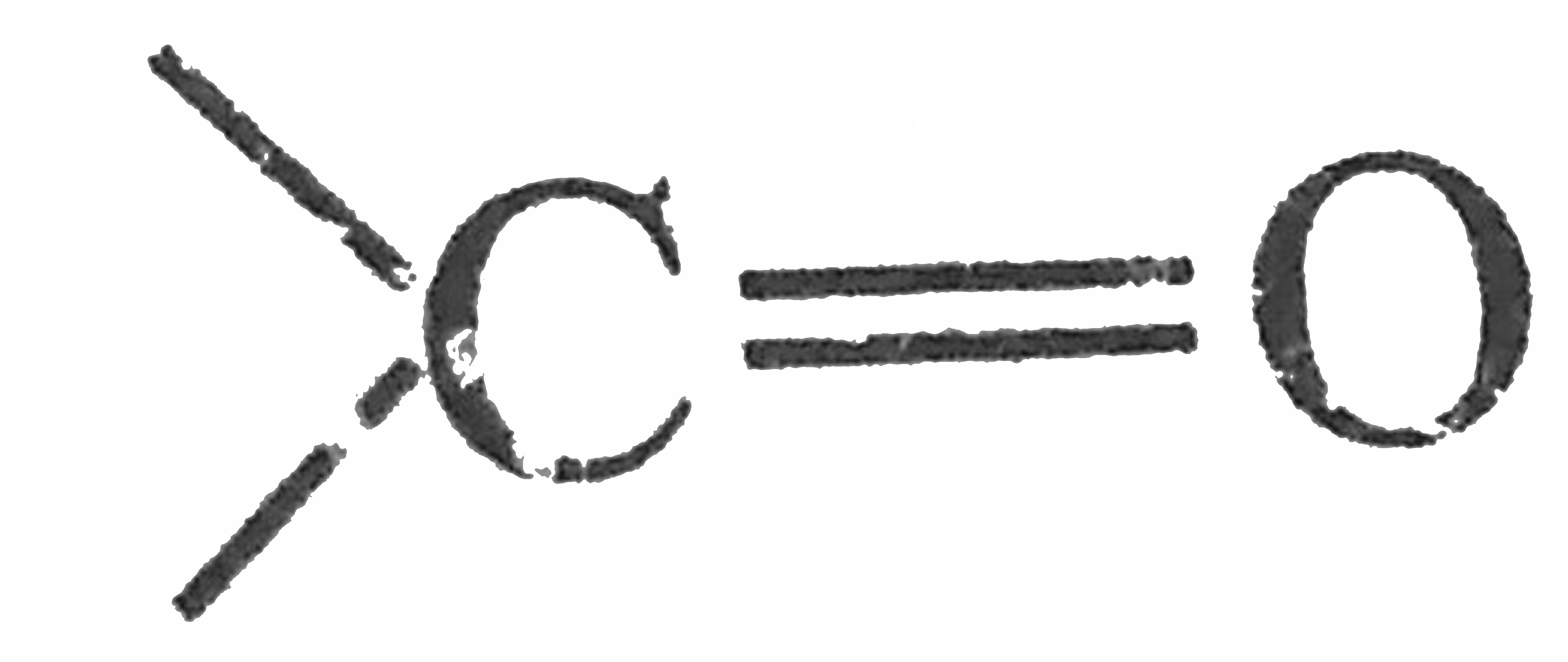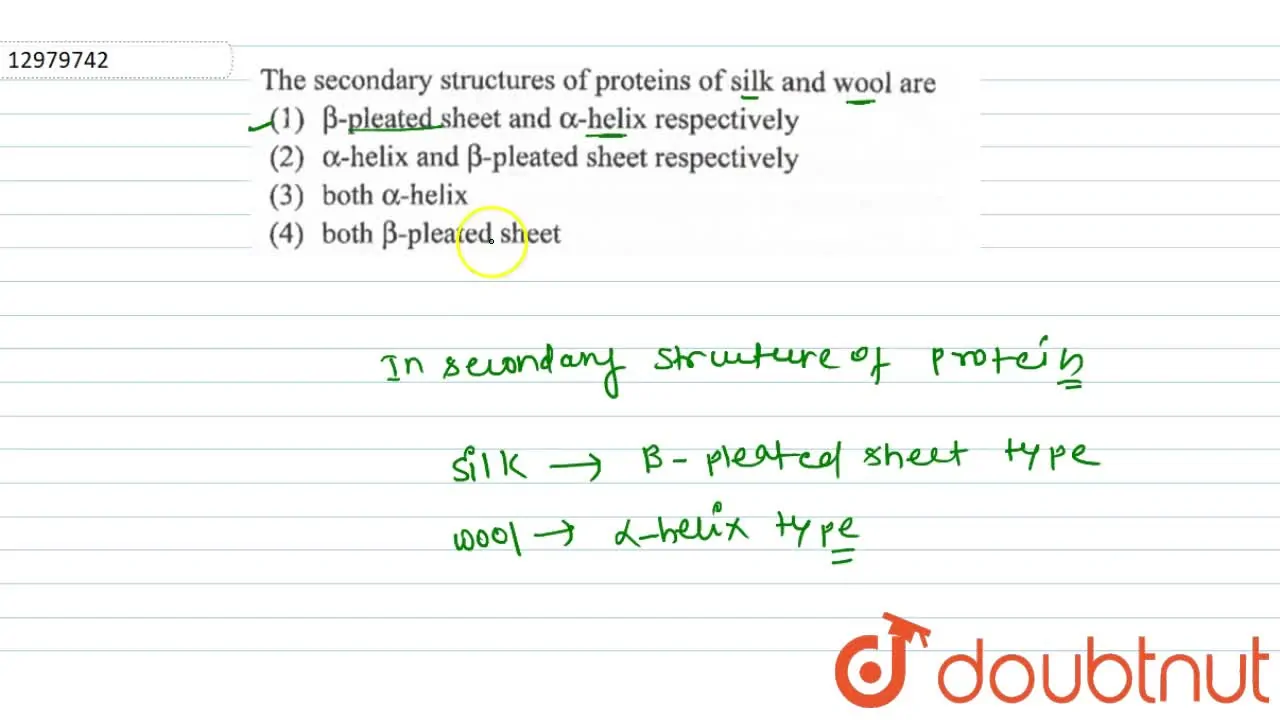The secondary structures of proteins of silk and wool are
A
β-pleated sheet and α-helix respectively
B
α− helix and β-pleated sheet respectively
C
both α-helix
D
both β-pleated sheet
Video Solution
Text Solution
The correct Answer is:A
The secondary structure of a protein refers to the conformation adopted by its polypeptide chain i.e., it refers to the shape in which a long polypeptide chain can exist. Proteins are found to exist in three different types of secondary structures: α- helix, β-pleated sheet structure and random coil structure.
Secondary structure arise due to the regular folding of the backbone of the polypeptide chain due to hydrogen bonding between an N−H of one AA residue and the C=O of another properly situated AA residue.
α-helix is one of the most common ways in which a polypetide chain forms all possible H- bonds by twisting into a right hunded scerw (helix) with the −NH group of each amino acid residue hydrogen bonded to the  group of an adjacent turn of he helix . For α-keratin (upstretdhed wool, hair, horn nails) Pauling proposed a helix in which there are 3.6 amino acid residues per turn.
group of an adjacent turn of he helix . For α-keratin (upstretdhed wool, hair, horn nails) Pauling proposed a helix in which there are 3.6 amino acid residues per turn.
In β structure all peptide chains are stretched out to nearly maximum extension and then laid side which are held together by intermolecular hydrogen bonds. The structure resembles the pleated folds of drapery and is known as β-pleated sheet structure. Such a structure has been proposed for silk fibroin, which has a repeat distance of 7.0Å and most closely approaches the fully extended, flat-sheet structure.
When wool is stretched, α-keratin is converted into β-keratin, with a change in the X-ray diffraction pattern. It is believed that the helixes are uncoiled and the chains stretched side by side to give a sheet structure of the beta type. The hydrogen bonds within the helical chain are broken, and are replaced by hydrogen bonds between adjacent chains.
|
Updated on:21/07/2023
Related Playlists
- BOOK - R SHARMACHAPTER - BIOMOLECULESEXERCISE - Follow_up_ Test 1110videos
BIOMOLECULES
- BOOK - R SHARMACHAPTER - BIOMOLECULESEXERCISE - Follow_up_ Test 1210videos
BIOMOLECULES
- BOOK - R SHARMACHAPTER - BIOMOLECULESEXERCISE - Follow_up_ Test 913videos
BIOMOLECULES
- BOOK - R SHARMACHAPTER - AMINESEXERCISE - Archives36videos
AMINES
- BOOK - R SHARMACHAPTER - CHEMICAL KINETICSEXERCISE - Archives39videos
CHEMICAL KINETICS
Similar Questions
Secondary Structure Of Protein
View SolutionSecondary structure of proteins refers to
View SolutionSecondary structure of proteins refers to
View SolutionThe Secondary structure of a proteins refers to ?
View SolutionThe secondary structure of a protein refers to
View SolutionWhat is secondary structure of proteins?
View SolutionSecondary structure of protein refers to
View SolutionThe Secondary structure of a proteins refers to ?
View SolutionThe secondary structure of proteins is derived from
View SolutionThe secondary structure of ptotein refers to :
View Solution


